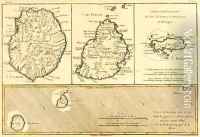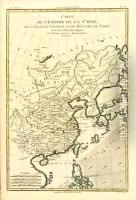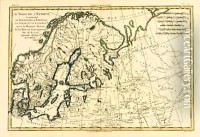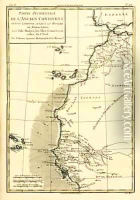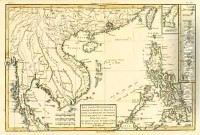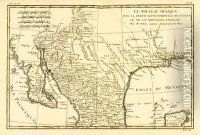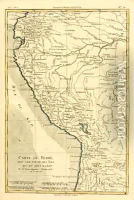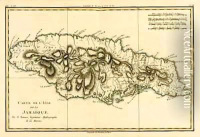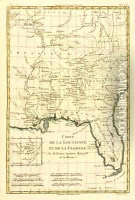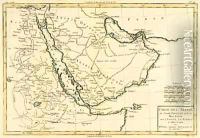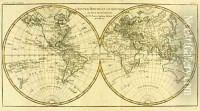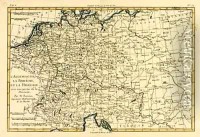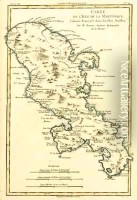Charles Marie Rigobert Bonne Paintings
Charles Marie Rigobert Bonne was a French cartographer and engineer who made significant contributions to the field of cartography during the 18th century. Born in 1727, Bonne came to prominence during a period of history when France was a leading center of mapmaking in Europe, and his work reflects the Enlightenment's emphasis on scientific accuracy in maps.
Bonne's early career is not well documented, but he is known to have succeeded Jacques Nicolas Bellin as the Royal Hydrographer of France in 1773. This prestigious position underscored his reputation as a skilled cartographer. During his tenure, he produced a wide variety of maps, including maritime charts, atlases, and geographic maps.
One of Bonne's significant contributions to cartography was his focus on presenting landforms accurately. He was known for his 'Rigobert Bonne Projection,' a pseudo-conical equal-area map projection that was particularly suited to depicting continents and hemispheres. This projection was a step forward in the evolution of cartographic techniques, allowing for more accurate representation of areas, especially in regions farther from the equator.
Bonne's work was characterized by a clear and precise style, with an emphasis on detail and accuracy over the decorative embellishments that were common in earlier cartography. His maps lacked the ornate borders and vignettes that were typical of the earlier Baroque style, reflecting a shift towards a more utilitarian and scientific approach in line with Enlightenment values.
Among Bonne's notable works are the 'Atlas de toutes les parties connues du globe terrestre' (Atlas of all known parts of the globe) and 'Atlas Maritime,' which showcased his expertise in marine cartography. His maps were widely disseminated and used in various atlases throughout Europe, influencing the work of future cartographers.
Charles Marie Rigobert Bonne passed away in 1795, leaving behind a legacy of cartographic works that would continue to be referenced and admired for their clarity and precision. His contributions to the field of mapmaking during the Age of Enlightenment remain an important part of the history of cartography.
